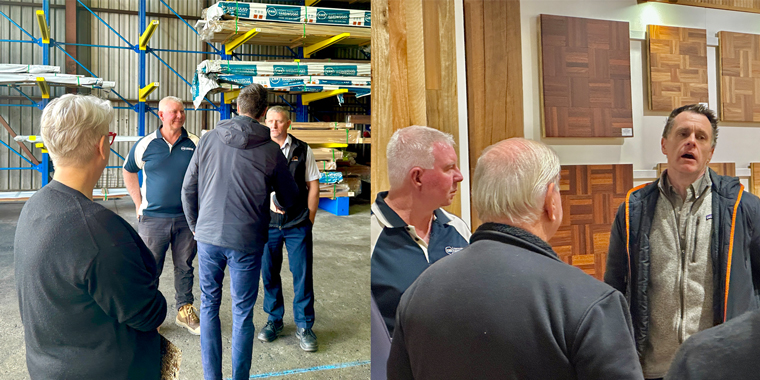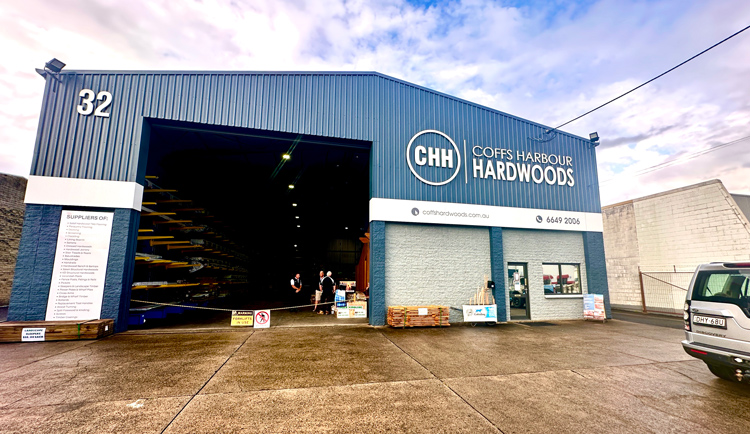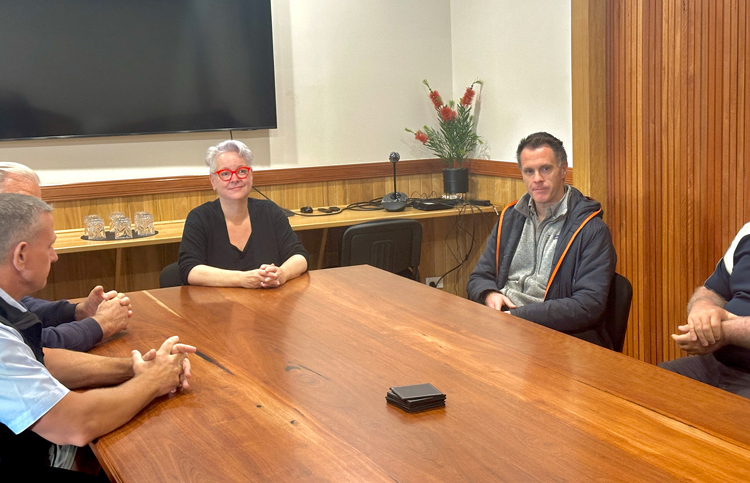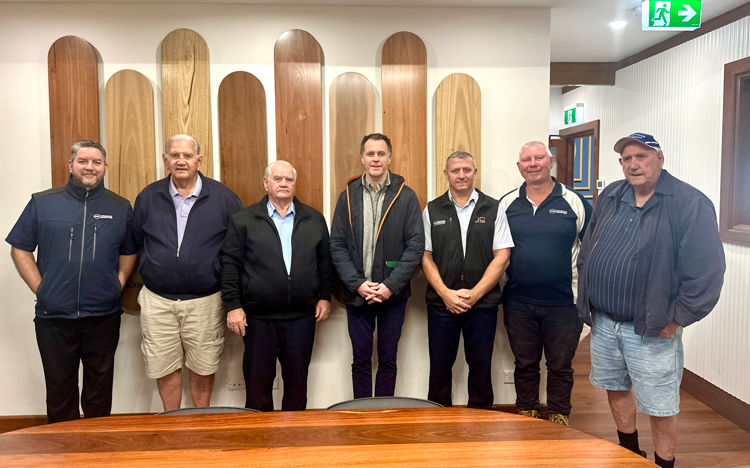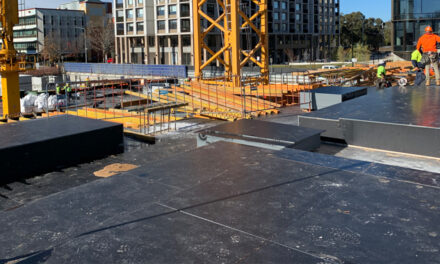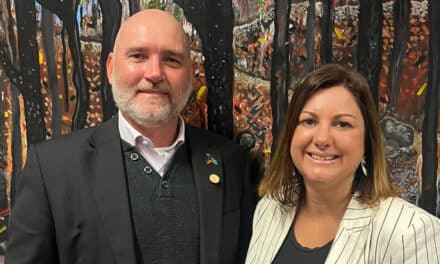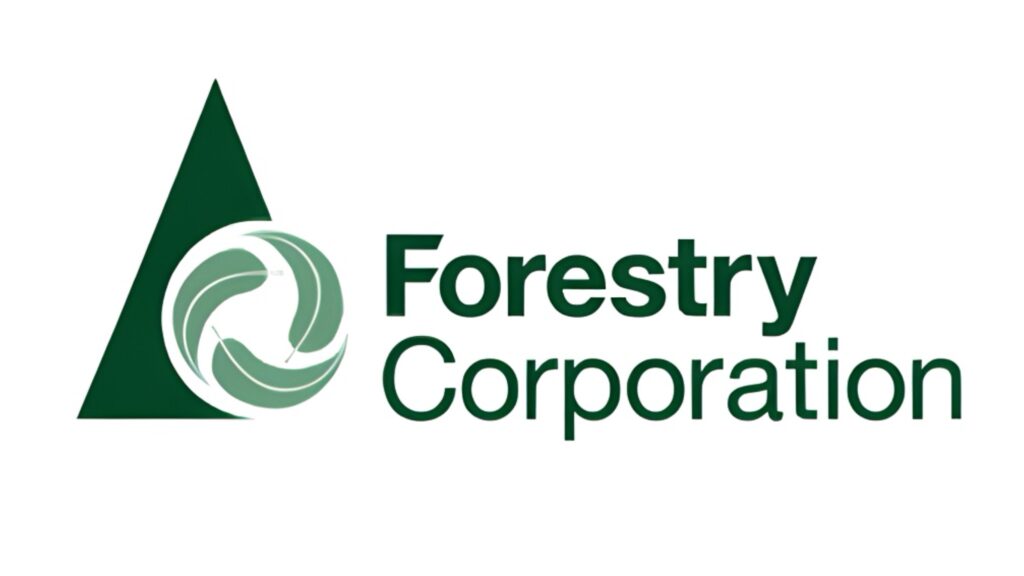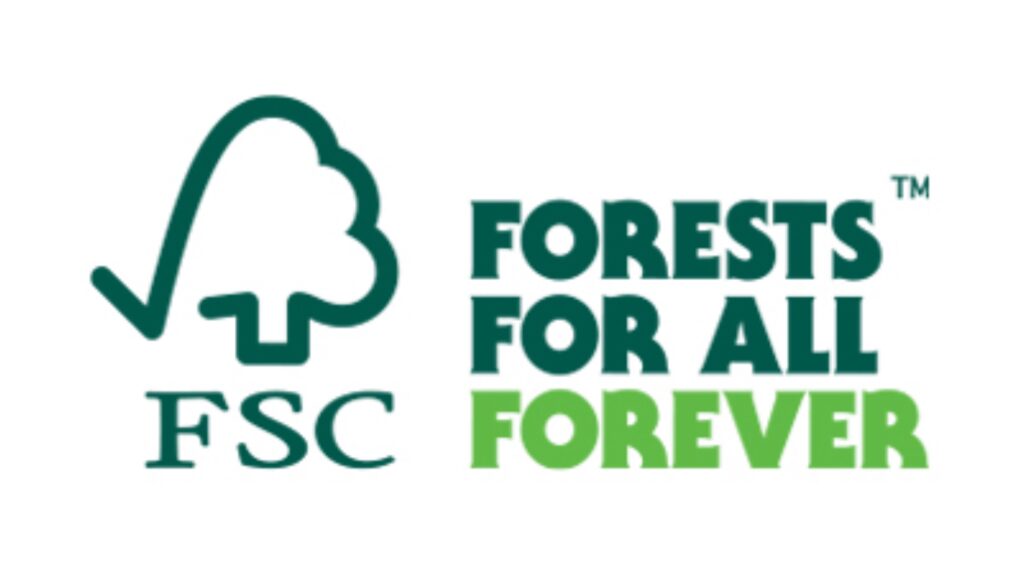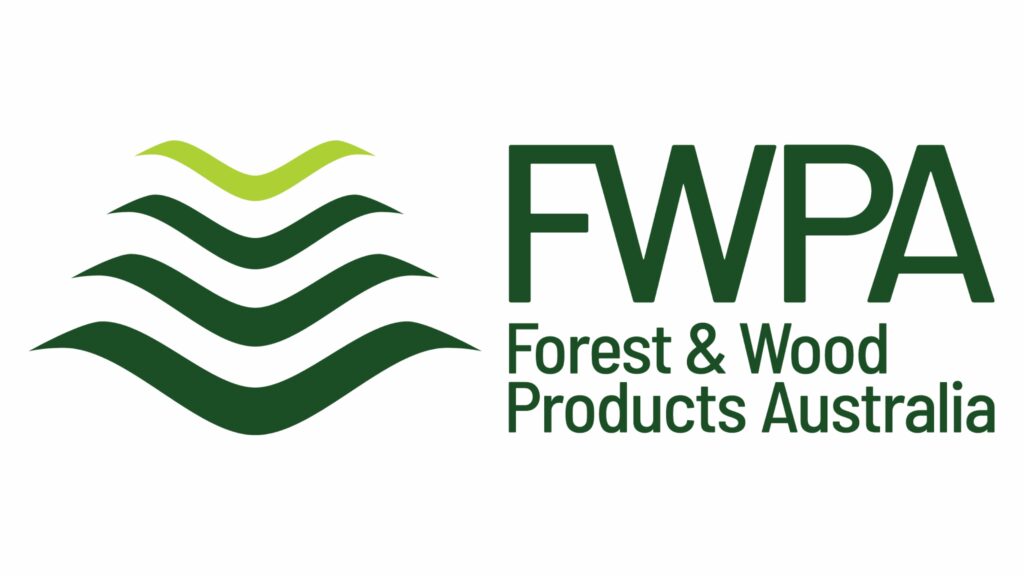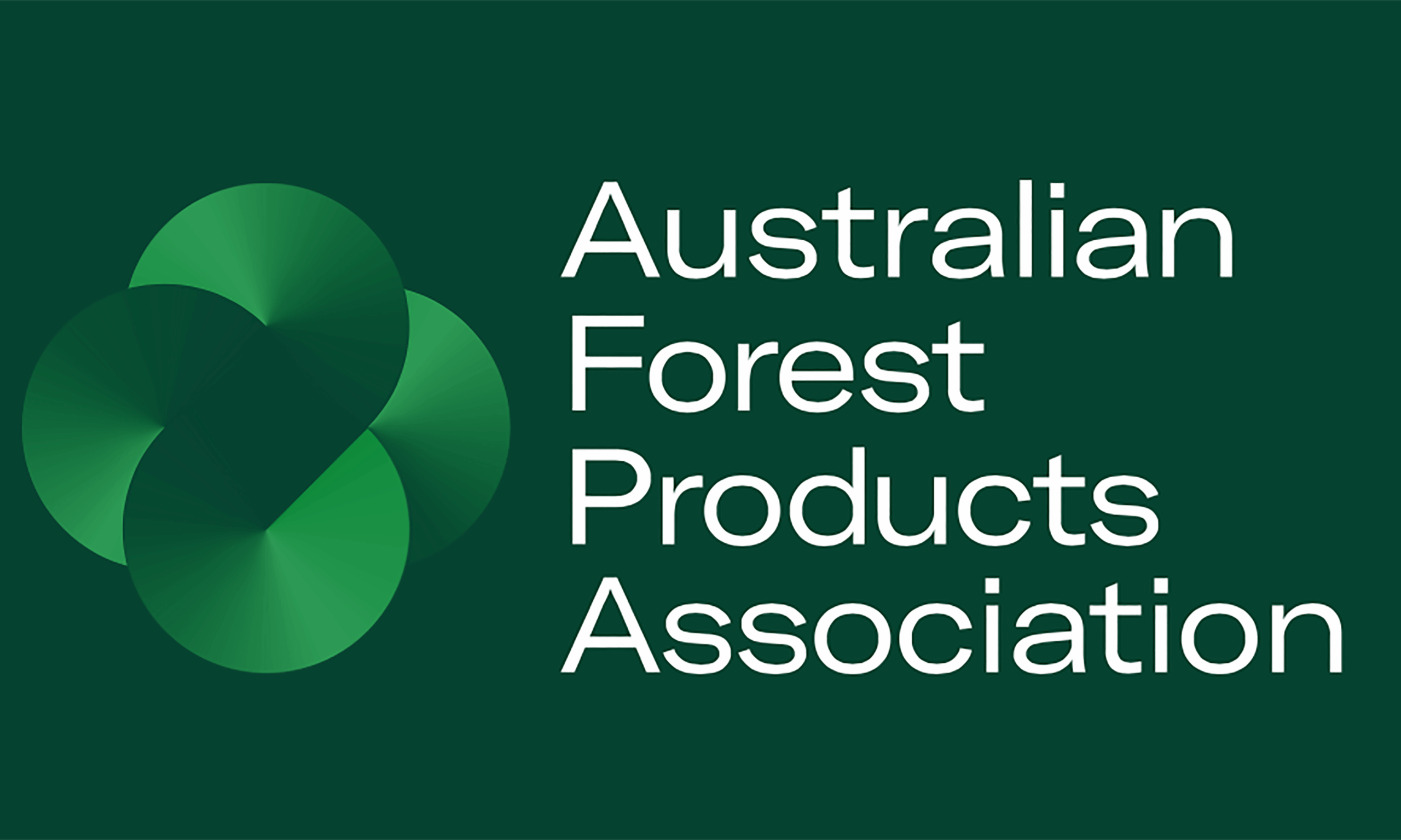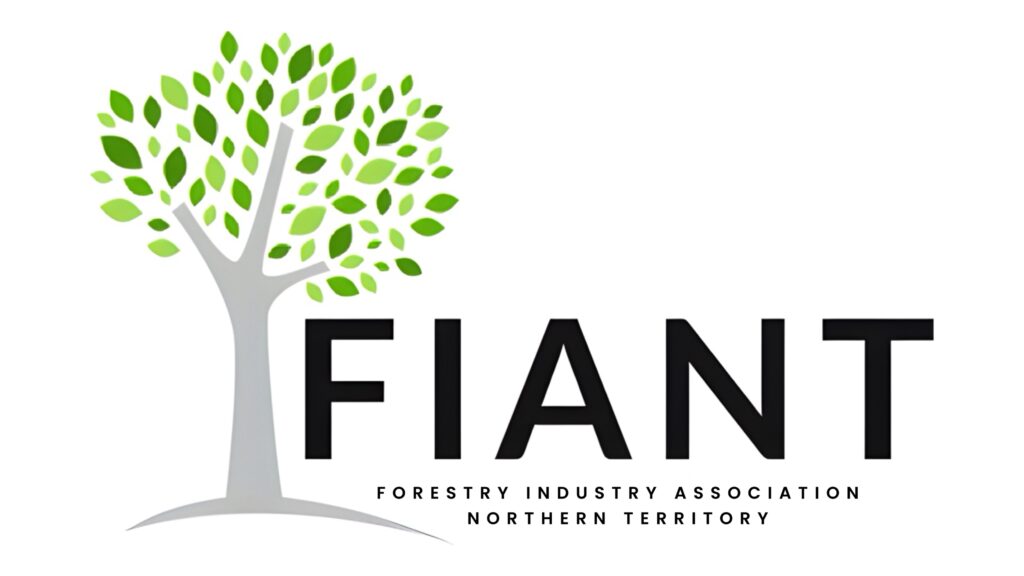PREMIER’S TIMBER FIRMS TOUR
COFF’S HARBOUR HARDWOODS’ MARTIN McCARTHY spoke to enews about the visit
by the premier and environment minister.
Coffs Harbour Hardwoods’ retail outlet.
The blue gum boardroom table became a star in its own right, showing clearly the value of native hardwoods.
Members of the McCarthy family with the Premier. “Not all of us,” said Martin, “we wouldn’t fit.”
MAIN PICS: (LEFT) From left, Environment Minister Penny Sharpe, Shane McCarthy, Premier Chris Minns and Martin McCarthy during the Thursday site tour at CHH. (RIGHT) Martin McCarthy was impressed by the fact the Premier and Minister seemed very open to learning about the local timber industry and potential impacts of too much land being gazetted into the proposed park. All images courtesy CHH
The Minns Labor Government went to the 2023 election with two key koala promises: that it would establish the Great Koala National Park (GKNP) on the Mid-North Coast, and that it would consult widely before doing so.
As part of this second commitment, Premier Chris Minns and Environment Minister Penny Sharpe embarked on a multi-day tour of Timber NSW member businesses in the area last week, starting out at Hurford’s last Thursday, then ending the day at Coffs Harbour Hardwoods (CHH) inspecting the Glenreagh timber processing site, before visiting CHH’s Coffs Harbour retail outlet on Friday to inspect the finished products and talk with owners the McCarthy family about both the timber industry in the region and the potential impacts of the GKNP.
Martin McCarthy spoke with Enews about the visit and his impressions of how the consultation period is progressing.
The first day was all about processes and the politicians and their entourage were walked through the telegraph pole process as well as the green mill and dry mill, with all the steps explained. “A lot of what we produce at CHH falls into the essential services type category,” says McCarthy. “We have a range of power poles, including specialised Sydney Trains poles, desapped poles that Ausgrid uses in its fire zone areas all the way through to the normal treated pole that you’d see on the side of the road. Add to that heritage bridge timbers that are essential for projects like Sydney’s current Pyrmont Bridge restoration and we had some very special items that we could show the Premier and Minister.”
In addition to the large infrastructure timbers that CHH is famous for, the newer range of CattleDog replacement handles was also on show.
“One of our tool handle makers knew the Premier was visiting,” McCarthy says. “So, even though it was getting late in the afternoon by that point, he stayed back to demonstrate how we use our hardwood offcuts to make tool handles. They were particularly fascinated by that – I think they both enjoyed being able to touch and feel those beautiful spotted gum handles.”
Both the Premier and Minister appeared to enjoy their tour of CHH’s production. “In their normal lives, timber is in the background,” says McCarthy, “but here they were able to both see and feel those infrastructure timbers that are so vital. We showed them the timber members we’re making for Pyrmont Bridge and they were both quite impressed.
“Penny mentioned that she’s also the Heritage Minister, so we were able to talk about how we work with Transport for NSW to supply large timber members on projects like this and she was able to develop a fuller understanding of the process.”
POTENTIAL IMPACTS
On the second day, the Coffs Harbour showroom was the centrepiece of the visit. Premier Minns and Minister Sharpe were welcomed into the building, itself made of large end-section timbers, and filled with display areas showing products such as CHH’s hardwood parquetry range and other flooring products.
The CHH team took the politicians upstairs to the CHH boardroom. “We have a big blue gum boardroom table, which really caught the Premier’s attention,” says McCarthy. “And, of course, we’re a four-generation timber business, so there were quite a few of us around that table. Premier Minns and Minister Sharpe were very open; they asked whether we wanted to have a discussion about anything. So we broached the Koala Park discussion and pointed out the need for a viable timber industry to move forward.”
McCarthy and his family discussed the business’s various plans for growth and innovation, at various stages of progress, and could see the impact of their discussion.
“We could see the Premier thinking through what we were saying,” McCarthy says. “He mentioned it was good to see that there is growth in the industry, so we had the feeling that it will be a positive outcome.”
McCarthy says that both politicians clearly understood the case for both Australian timbers and for native hardwoods. “We pointed out that some of those large bridge timbers and the bigger poles, such as the ones needed for Sydney Trains, simply can’t be obtained from hardwood plantation timber, let alone softwood.
“We also talked about the alternatives for standard poles if we were locked out of native timber harvesting, essentially shifting to concrete, steel or composite poles – all of which have higher carbon costs in the manufacture as well as higher per unit costs, which would be passed onto consumers in their electricity bills.
“As for our domestic housing product,” he adds, “that would have to be imported, which adds both financial and carbon transport costs to the product and opens up the risk of less well-regulated forestry practices than those we have in Australia.”
Minns and Sharpe had clearly not expected the level of sustainability in place at CHH when it came to waste minimisation.
“We try to use pretty much all our timber fibre in one way or another,” says McCarthy. “Both the Minister and the Premier commented on the fact they could see we utilise everything, all the way down to these small tool handles for hammers and the like. The Premier said there’s not many businesses he’s come across that would go to that nth degree to use their ‘waste’ rather than just dispose of it. He was impressed with that.”
EXPERTISE OVER ACTIVISTM
McCarthy, too, was impressed with the focus the politicians brought to their tours and meeting. Concerns about potential job losses were given serious weight, and the renewable nature of native forestry seemed to be well understood.
“I feel that their connections with Forestry Corporation have given them a good basic understanding of the fact that when timber is harvested, that’s not the end,” McCarthy says. “That we replant, or encourage natural regeneration, then manage the forest to keep it safe for another hundred or so years until that area is harvested again.”
It was encouraging to hear that expertise was being sought out in this tour rather than the loudest voices in the room holding sway. Several months ago, when Enews read through large swathes of submissions received by the State Government during its Forestry Industry Action Plan public consultation period, there were multiple emotive copied and pasted pleas falsely equating the timber sector with deforestation for every reasoned response.
It was easy to worry that these would swamp the fact-based replies – even some of the broadly anti-forestry responses in that set rightly acknowledged that development and agriculture represent vastly greater risks to native fauna, including koala populations, than forestry.
However, before the election, the Minns government promised that its GKNP consultation process would be guided by multiple inputs, including scientific research and industry as well as environmental and public concerns, and this seems to be what is happening.
“The Premier wanted to come onto a couple of sites to see for himself how it works and what’s actually going on,” says McCarthy. “No doubt he would be fed information from all sides – he wanted to go and find out for himself what the ins and outs of the industry are, which is what he did.”
McCarthy felt that the CHH team was properly heard during the politicians’ visit and was cautiously optimistic when we spoke.
“We know that they’ve committed to a Great Koala National Park,” he says. “The Industry Advisory Panel provided options for what both koala populations and industry could manage in relation to the park boundaries. We’re a part of the industry case put to government, so let’s just hope the size of the Koala Parks is a sensible option for all.”
Enews reached out to Minister Penny Sharpe for additional comment in this story, but the time constraints of this issue were too narrow for her to participate.

